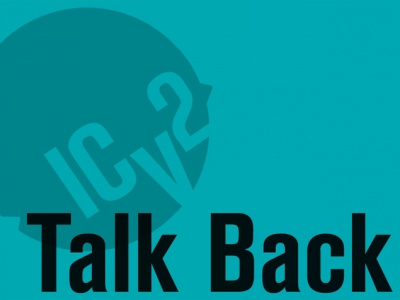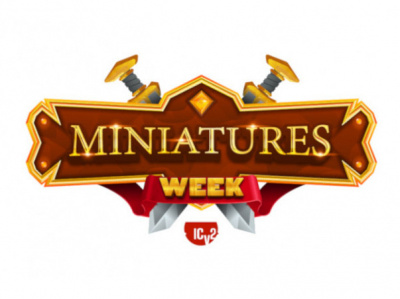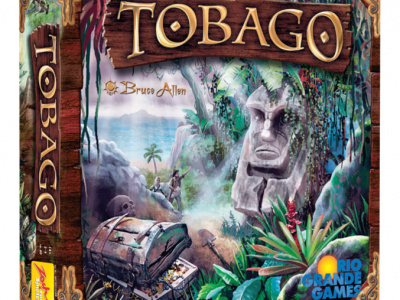Here's a recap of the show from my perspective, influenced in part by my own experience, comments from my staff, and comments from about 500 attendees and about 50 exhibitors who I spoke with personally. I spent most of the show talking to people, trying to get as close to a 'statistically valid' sampling as possible by just randomly asking people how things were going. In most cases I tried to be anonymous, but that wasn't always possible, especially with exhibitors and industry insiders.
It's easiest if I just list the positives and the negatives, so here goes!
Negatives:
(1) The number one issue was that we did not process the registration lines nearly as quickly as we should have. This situation was 'beyond unacceptable' as Jeff Mackintosh put it on the wheeze-l list. I agree.
1a. Our computers got hit with viruses. We had three places where we had computers open to the internet (Virtual Gen Con, the press room, and the email stations). Obviously we should not have allowed this. We think the viruses hit us at the email stations. We found suspicious files (including downloaded porn, which shouldn't have
happened) on one of them in particular that looked like the point of infestation. From the email station people were able to access the entire internet and download whatever they wanted, which is not an acceptable setup situation. Even though all of our computers were clean when we arrived, by Wed evening we had 216 virus-infested computers, of
the WORM variety.
1b. Our network was not property configured for the volume of use that hit the system. This problem might not have been noticeable except that it was amplified by the virus/worms we got hit with. The viruses manifested by eating up massive amounts of bandwidth so that hardware devices on the network could not properly communicate with each other.
1c. Some of our fundamental processes and policies contributed to the problem. Do we really need to require everyone to have a badge with their name on it? Questions like this--which increase the requirements of the registration process--need to be given a hard look with an eye toward reducing the registration system requirements to the point where lots of gamers can be issued badges quickly and efficiently.
1d. The specific chokepoint of the system was badge printing. Badges are printed 6 to a sheet. With the worm infecting our network, badge printers would regularly time out due to the high traffic of information on the system. Sometimes several sheets would get lost at once, creating mass confusion and delays behind the registration desk. This situation needs a hard look as well.
1e. We were slow to respond to the problem. My biggest personal regret of the show, the one specific thing I feel I should have done a better job of on-site, it's spotting how bad the line problem was Sat. sooner. Eventually we 'threw the rules out the window' and started doing things like hand-writing badges, but we didn't do that until about 2pm on Sat. The good news is that once we did that we were able to process the huge line to where there was no line by about 3:15. But we should have made that decision a few hours earlier.
These line problems had two serious consequences. One, obviously, is that many fans who came to the show as attendees were disappointed that they had to spend so much time in line, giving them less time to shop and less time to enjoy the convention. Two, this translated into lost sales for exhibitors, for the same reason. Again, addressing this
problem is our number one priority for next year.
(2) The layout of the exhibit hall was sub-optimal. As many have pointed out, the higher the aisle number, the less the traffic. We thought a higher percentage of the traffic would come in the middle doors, but a higher ratio of the traffic came through the doors down by aisle 100 than we thought. Also, the east-west aisles were staggered, which didn't
facilitate walking the hall in that direction. The combination of these factors caused the traffic flow to be very lopsided in favor of exhibitors toward the east end of the hall.
(3) Some of the local business ran out of food or drink, and there wasn't much you could get onsite after hours. While the situation was way better than in Milwaukee, it wasn't perfect. We tried to warn the locals, and some of them tried to respond as best they could, but even so there was a shortfall. Fortunately, this is a problem that will basically fix itself now that the downtown businesses know what to expect. Many of the local businesses have already apologized about this and have committed to having much more food on hand next year.
(4) The ATMs ran out of cash a lot and didn't get refilled as promptly as they should have been. This seems like a small issue, but if gamers can't get money, they can't spend money, which means they don't get in as much shopping as they'd like and the exhibitors don't get the sales they'd like, which is bad all the way around.
There were numerous other issues, as there always are for an event of this size, but the above issues are the major ones. I don't want to trivialize any other issues people had, but I do feel the need to prioritize issues which affected a large number of people, and the
points above are the ones that fall into that category.
Positives:
(1) Aside from the line problem, most people were really excited to be at the show once they got inside. The vast majority of players I talked to were really excited to be at Gen Con, were having a great time. Specifically, people were excited about:
1a. The move to Indianapolis. 'Way better than Milwaukee' was the most common line I heard. For four years I've been worried about the move. Gen Con is very special and moving it was a scary thing. But it's clear now that we made the right decision all those years ago! Even reluctant Milwaukee fans grudgingly admitted that the move was the right thing to do.
1b. Local businesses were gamer friendly. Many local businesses had gaming areas and special menus. It's too bad some ran out of food or drinks, but kudos to them for trying and for having a welcoming attitude.
1c. Proximity. Everything was so close to the convention center, from hotels, to dining, to bars. Almost everything you could want for was within 4 blocks of the convention center.
1d. Safety. People in general felt very safe in the downtown Indy area, more so than in Milwaukee.
1e. Attitude. I heard lots of kudos on the attitude of our staff and the staff of local business. There are always exceptions, and we're sorry to hear about those, but we're delighted that over all the people who worked the con and the local businesses got high marks for customer service, in spite of the line/volume problems.
In general people were really happy with the move to Indianapolis (this was as close to a unanimous vote as one could hope for), and promised to come back next year and heckle their friends who didn't come this year.
(2) Exhibitor sales. Out of the 50 or so exhibitors I talked to, only two had sales less than their projections. Both of these were toward the 'back wall.' I'm sure there were others who were disappointed -- there always are -- but most of the ones I talked to were very happy with the show, their sales, and the move to Indy. Several expressed concerns
about losing sales due to lines outside, but when pressed admitted that their sales were still greater than they'd forecasted.
(3) Attendance. In spite of the lines, the number of people who endured those lines and made it in the door was significantly up from previous years. Our goal -- which we believed was a 'stretch goal' -- was to not lose ground during the year of the move from Milwaukee to Indy. In other words, our goal was 'flat' attendance from last year and we recommended our exhibitors plan accordingly. But the reality is that we were up, somewhere in the 5-10% range. Our unique attendance was probably more than 25,000 and then number of badges issued was probably over 28,000 (this number is always higher than the other due to the people who come for exactly two days and therefore buy two one-day badges instead of a 4-day badge). We won't announce actual numbers until we've had a chance to reconcile what the registration system says with what the accounting system says, but both systems are indicating roughly the same order-of-magnitude improvement.
(4) Press. We got a ton of press at this show. I personally did more interviews than I've ever done in such a short period of time (through Magic, 3rd Ed D&D, Pokemon, etc). I did 7 interviews just on Thursday! We were picked up by NBC, CBS, ABC, Fox, Associated Press, Indiana Public Radio, the Indy Star (3 times), Nuvo (the local entertainment paper, twice), WGN Chicago (which wants to do a radio game next year,
and many more. The number of press badges issued was up about 40% over last year (and we double check all press references, so I'm sure 90% of the press badges were legit). We were also covered by two game media: gamer.tv and tech tv.
(5) Events. While we still had problems with events -- it's an extremely tricky part of the program that relies on hundreds of independent game masters, game clubs, and game companies to give us accurate information -- I heard a lot of people say that the events part of the program was way better run than in past years. It's the first year of me
going to Gen Con where I heard more positive than negative in this area!
(6) Special events. I heard lots of kudos regarding various special events that we hosted this year, some of which were new, some of which were returning stars. The event I heard the most positive buzz about was the True Dungeon, the life-size dungeon that you could walk/play through, complete with props, traps, special lighting, riddles, combat, etc. Jeff Martin and his team deserve a big hand for that! I also heard lots of kudos regarding Virtual Gen Con, Gamer Abuse, the Costume Contest, our guests of honor, the art show, Kids Track, the exhibitor and artist awards, the Party in the Plaza (with the all-girl AC/DC tribute band, and the chief deputy major giving me 'the key to the city'), the 64-computer LAN, Time Warp II, the anime rooms (which always seemed packed), the NDSM event, the auction, the gift shop (our 52-oz mugs were a huge hit), and many others.
Summary:
The fundamentals of the convention are strong. Lots of people came and fell in love with the new venue. People hated the lines but loved the show, which says to me that if we can credibly tackle the lines problem we have a great future in store for us in Indianapolis.
All of us here at Gen Con headquarters are exhausted. If you have email or phone messages out to anyone here, don't expect a response for a few days while we recover!
In closing I have to thank all the people who worked so hard on this show, from staff, to volunteers, to contractors, to guests, to exhibitors, to game masters, and to the local businesses as well. It's a huge amount of work and coordination to pull off an event this size and it wouldn't be possible except for about 3000 people who work 18+ hour days throughout the whole con to make it happen. Thanks to all of these people!
But thanks most of all to the fans who came and had a great time and a great attitude and gamed like crazy!







